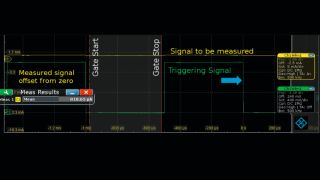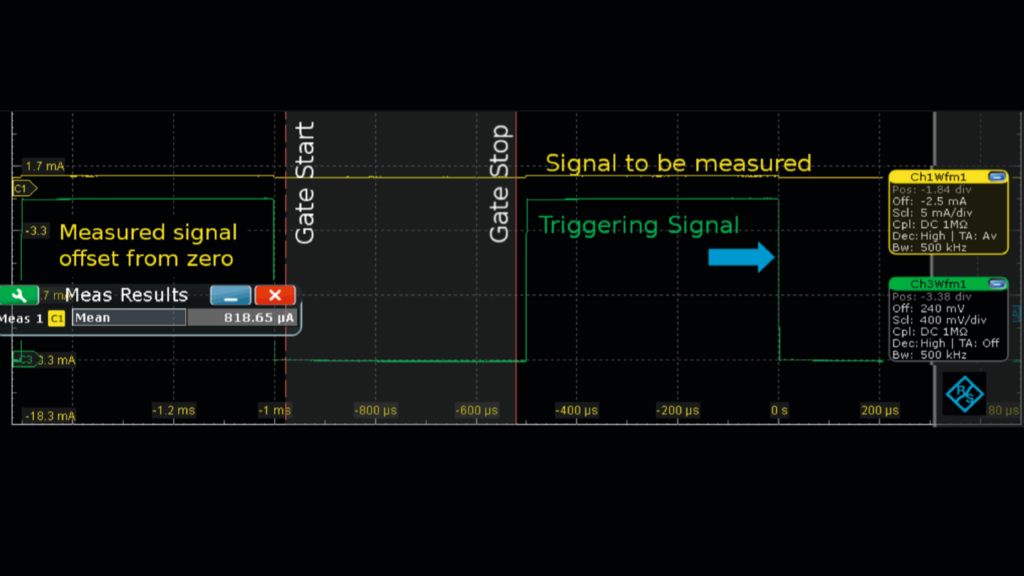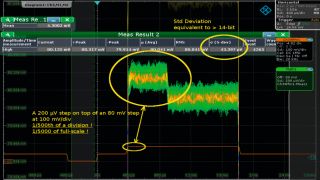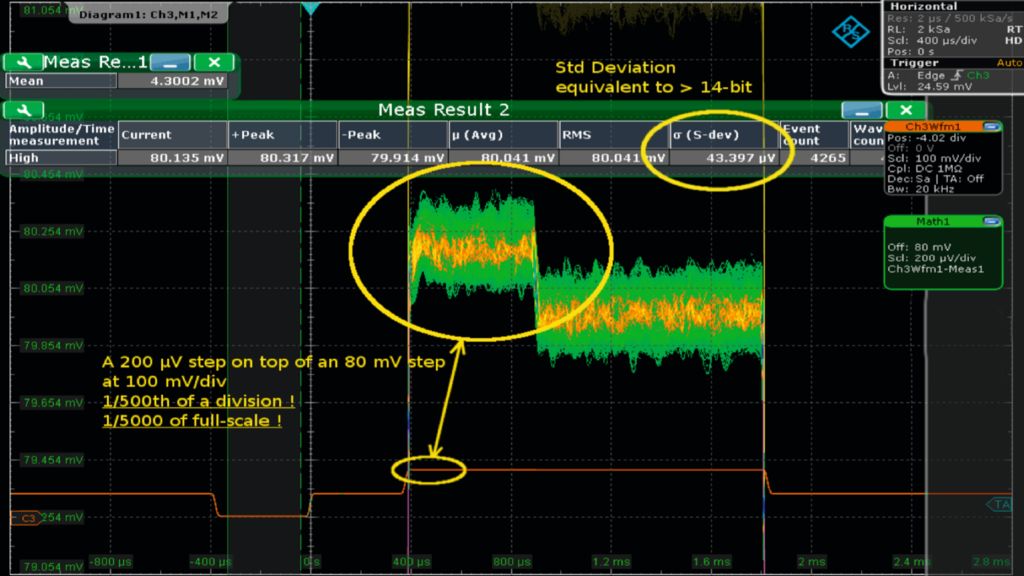Setting up the R&S®RTO for re-referencing
Triggering
When the measured signal has level changes > 0.02 division, the R&S®RTO can provide a stable trigger.
If the signal has < 0.02 divisions of amplitude or drifts significantly, it is generally possible to find another trigger source that is synchronous with the signal of interest, such as:
- A supply voltage change
- A signal state change of an Enable or other control line
- A command signal applied to the DUT via a serial bus, such as I2C, or one of the many other interfaces that can be used as trigger sources in the R&S®RTO
Reference measurement setup
Typically, a Mean measurement is used to filter noise that may be present in the sampled signal, and a gate is applied to it to select a stable portion of the waveform as the reference.
The measurement setup requires first setting the source channel of the measurement, the type of measurement and finally the gate period. (Note: The source channel must be active and the State box checked to make the gate selection visible on the screen.)
The gating Start and Stop times are adjusted to match the desired reference part of the measured waveform. In the example shown below, the zero volt section of the trigger waveform (Ch3Wfm1, in green) corresponds to the zero current part of the measured waveform (Ch1Wfm1, in yellow). As a result, it is easy to see where the gate needs to be placed.











